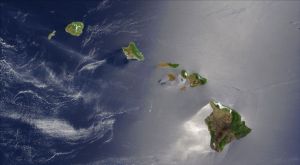Aloha! We have some exciting news to report about the upcoming Plant Biology 2017 conference in Hawaii, and are asking for your help in bringing top-notch training in science communication to the next generation of students and scientists. We face many challenges and our world desperately needs informed policy and improved technologies to meet those challenges, many of which will have plant science serving a crucial role such as in agriculture, food, fiber, fuel, and fun. We’re going to “Talk Story” at our workshop, and need your help to keep everyone energized and to thank our speakers for helping make this happen.
What we’re doing
On Saturday, June 24th, we are hosting a workshop on using human-centered storytelling for science communication, using compelling examples that touch on plant biology from Hawaii and across the Pacific. This will be followed by group activities and a panel discussion, along with resources for our attendees to help them get started. The workshop will happen right at the beginning of the Plant Biology 2017 conference in Honolulu, Hawaii, so there will be four days of plant biology for our 165 registered attendees to think about through the lens of communicating science through human-centered stories.
Talks will include the story of the Hawaiian Papaya by Dennis Gonsalves, Sudden Ohia Death by Ambyr Mokiao-Lee, communicating science in a politically-charged environment with Sarah Thompson, and Bt Brinjal with a video by Arif Hossain. While the event is currently full, we will be recording the talks so anyone who couldn’t make it can still take part.
What we need
Everything is in place for a great and memorable experience for our attendees. We are going to have fresh Hawaiian papayas for them to eat, along with coffee to help counteract jet lag and wake everyone up to start thinking about science communication. As you probably know, conference center catering is expensive, and with 165 people getting coffee and papayas, the cost is high! We would like to do something special for our speakers and panelists to thank them for volunteering their time to make this happen. There will also be a few printing costs.
All told, $1,000 will cover our costs. If we are not able to raise the whole amount before the workshop, it will not jeopardize our plans, and that is thanks to the contributions of our Sustaining Members. So you can donate with confidence that your support will go toward this and other great projects.
What you get
Anyone who donates $50 or more before the workshop on the 24th will get acknowledged by name at the start of the proceedings, for one. Second, dozens of young scientists could take up the mantle of trying their hand at storytelling to communicate science, and it could have far-reaching impacts. Finally, after the conference is over, we will be uploading videos of the talks to Youtube and Plantae so that everyone can benefit from it!
Mahalo, and we appreciate your support!























